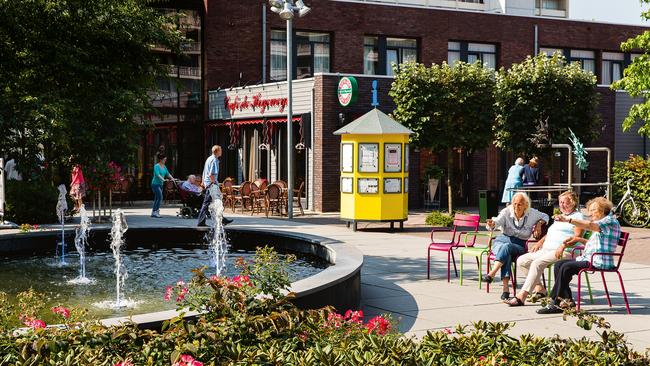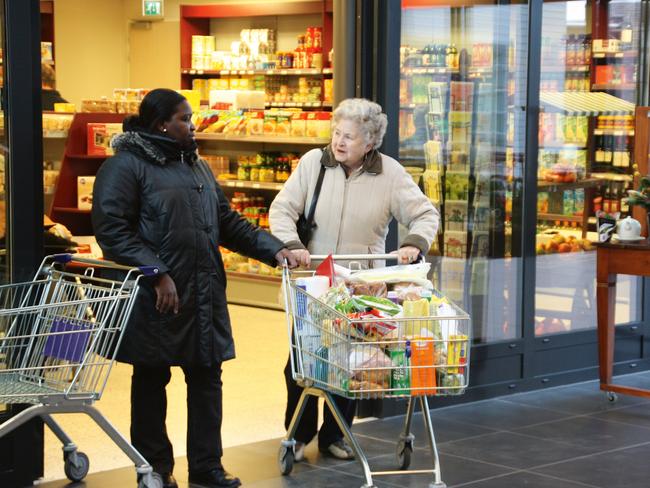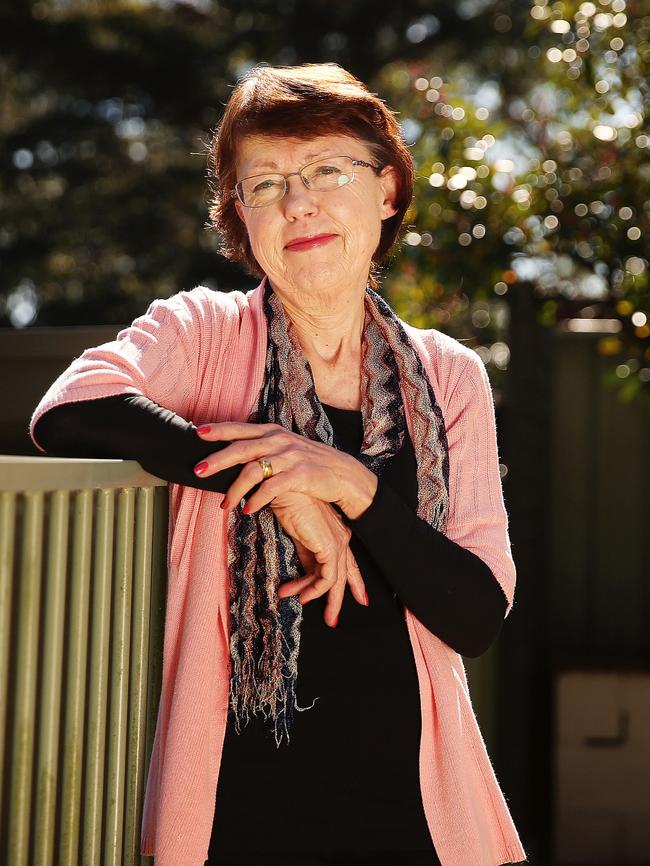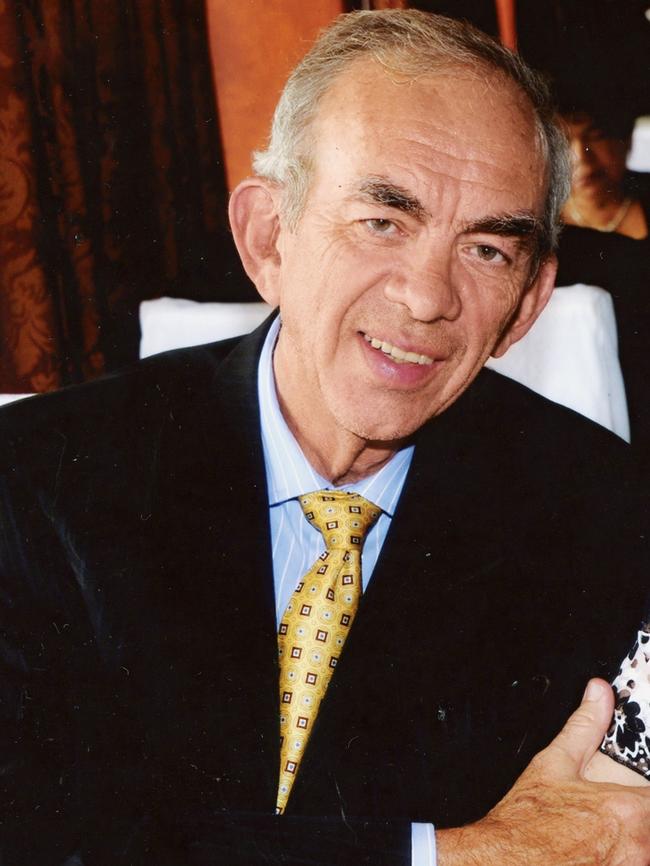The bold new experiment changing the way we treat dementia
WITH a predicted one million Australians set to suffer from Alzheimer’s by 2050, a bold new experiment is changing the way we treat the disease

Stellar
Don't miss out on the headlines from Stellar. Followed categories will be added to My News.
IN a small town, about 30 minutes drive from Amsterdam, a woman in her late 80s is having her hair done. She sits in silence as the hairdresser talks about her day and gives her a blow-dry. It’s unlikely she remembers what the word “haircut” means – she’s no longer able to communicate verbally – but the hot air, the sound of the blow-dryer and the feeling of hands running through her hair are familiar and comforting.
Welcome to Hogewey, one of the world’s most pioneering experiments in dementia care. From the outside, it’s a Dutch village like any other, but all 152 of its residents have one thing in common: they’re in the advanced stages of dementia, most no longer aware of where they are, or why.
Hogewey is the last place they’ll ever live – but that doesn’t mean they have nothing left to live for. Residents come and go as they please around the one-and-a-half hectares of gardens and shops. They walk to the pub, have coffee and see movies. Romances have even bloomed. The catch is that everyone else in the village, from the waiters to the check-out person, is trained to help people with Alzheimer’s; ready to pick up residents if they fall, or guide them home if they get lost.
It’s a real village – anyone can buy from the supermarket, eat at the restaurant or visit the theatre – but it has a safety net. And it seems to be working. Since the facility opened in 2009, one of its founders, Yvonne van Amerongen, says the residents seem happier, take less medication and, on average, have an increased lifespan, with the typical stay now three and a half years. “We see our clients eat better, they have more exercise. We’ve also noticed that the average time people live here is getting longer,” she says.
With almost one million Australians predicted to suffer from dementia by 2050, we’re overdue for a shift in the way we treat the disease.

Dementia is the name given to the brain deterioration that results in memory loss, confusion and a breakdown in communication. Most cases are caused by Alzheimer’s disease, but it can also be brought on by head injuries, genetics and strokes – and it doesn’t only affect the elderly. More than 25,000 Australians have younger-onset dementia, which can be diagnosed as early as 30. Despite decades of research, there’s no cure, and little treatment.
In life, we want to live with people like ourselves, people we’d choose as friends, those with similar values, jobs and interests
Most people with dementia end up in aged care where symptoms are managed with medication – it’s hard to shake the image of someone with Alzheimer’s left in a urine-stained chair in a nursing home, confused and scared, and unable to recognise their loved ones. Not surprisingly, dementia has overtaken cancer and heart attacks as the disease that people are most terrified of. An Alzheimer’s Society UK survey revealed almost 60 per cent of people would avoid being diagnosed with dementia because it would mean their “life is over”.
But Hogewey shows it doesn’t have to be a counsel of despair.
About 20 years ago, it was a traditional aged-care facility. Van Amerongen, who was the care manager there at the time, learnt her father had died unexpectedly and thought, “Thank God he never had to spend time in a nursing home.” That prompted a rethink. “The management team asked, ‘What is important in life for people?’” she recalls. “If they come to a nursing home, they should be able to lead as normal a life as possible. So we started, in 1993, to develop our new vision, and in 2008 we demolished the old building and built a neighbourhood.”
It was a controversial move. The village has 23 residences, each with around six guests, divided up by cultural, social, professional or religious lifestyles. So, for example, wealthy people live together in a house with maids and fine china, while those who worked as farmers will have a more rustic decor. It’s not about creating a class system, says van Amerongen, it’s about making people feel at home.
“In life, we want to live with people like ourselves, people we’d choose as friends, those with similar values, jobs and interests,” she says. “Compare this: two gentlemen knock on our door. They are both over 65 years old, had the same profession and the same income. Surely that would mean they can live happily in the same house in Hogewey? Well, if I tell you that these two gentlemen are Sylvester Stallone and Woody Allen, you will understand background, income, etc, are not the issues that make things work. It is about your norms and values.”
For the doctors and carers, “Their job is to make these worlds as real as possible; through the way the home is decorated, the food, the music, even how the table is laid.”
To pull that off, Hogewey has 24/7 care with doctors, psychologists and physiotherapists on staff. That sounds expensive, but the Dutch government subsidises aged care, so while the cost is almost $8000 a month per patient (standard in the Dutch system), the amount paid by patients’ families is around $3600 a month – and they only pay the government, which in turn pays Hogewey. The bigger challenge is the waiting list. The only way to get a place is when a current resident dies.

Thankfully, the philosophy is spreading. In 2013, another dementia village, Georgian Bay, opened in Canada. It’s decked out with memorabilia from the ’40s, ’50s and ’60s to take patients back to the era they remember best. They listen to Elvis Presley, hang out in a ’47 Dodge truck and get 65-cent shaves in a barber shop.
Italy and Switzerland are building their own villages, and Heathcote Health in Victoria recently announced plans to open one, too.
Like Hogewey, Heathcote Health will group residents into homes by background, and the town will have a post office, bakery and supermarket. CEO Dan Douglass says he’ll take the model a step further. “We’re finding ways residents can work in safe outdoor environments nearby, like wineries and farms,” he says. “Physical work has been shown to improve dementia symptoms, but it also adds value to the patients and community – it makes them feel they have a purpose.” Douglass is confident the centre will be as affordable as traditional aged care, if not cheaper, because of reduced medication costs.
In June 2017, Synovum Care will open Bellmere, a Sunshine Coast village based on the Hogewey principles. Its 17 houses line six streets, centred around a town square with shops, a gym, cinema, cafe and hairdresser, staffed by specially trained workers.
People with dementia and their families are choosing a lifestyle that fits their needs, rather than being forced into the needs of the facility
While not every nursing home can be turned into a town, the idea behind dementia villages – that residents are valuable members of society – can be incorporated anywhere. It’s used, in part, by facilities like Starrett Lodge on NSW’s Central Coast, which helps residents tick items off their bucket list by organising activities such as skydiving.
Aged-care operators, including Group Homes Australia and Hall & Prior, are also creating home-style settings where residents choose their own schedule and work together to help around the house. In the past, it was thought giving dementia patients privacy and rest was the best option. But families of residents in these new homes report that their loved ones are deteriorating more slowly, and sometimes even improving. This is backed up by research that’s shown social isolation reduces the production of myelin, a fibre that protects our nerve cells, so loneliness allows dementia to spread through the brain more rapidly.
Carol Bennett, CEO of Alzheimer’s Australia, thinks this new wave of care is the beginning of a much-needed overhaul of Australia’s aged-care facilities. These changes should be driven by resident expectations and quality of life, rather than centres simply ticking off a list of safety guidelines. “These models represent a move to a more market-driven model of care, where people with dementia and their families are choosing a lifestyle that fits their needs, rather than being forced into the needs of the facility,” says Bennett. “We want to see people have meaningful lives with dementia. I think it’s a fantastic model.”
But critics say these villages are deceiving patients by not telling them the truth about their condition. Van Amerongen counters that Hogewey staff never lie to patients outright, but are trained not to correct them when they get confused. “It’s called validation, a technique for communicating with people with dementia depending on what the person needs in that moment,” she explains.

According to Imelda Gilmore from NSW, who has a husband, aged 68, with early-onset Alzheimer’s, people who criticise need to remember dementia care isn’t about them. “When Graham’s health took a turn for the worse, he would get facts wrong all the time. He’d swear black was white and if I tried to correct him he’d get distressed,” she explains. “I thought I’d never lie to my husband, but you realise quickly that it’s not really a lie, because in their reality it’s honest for them.”
She researched many nursing homes for her husband of 45 years. Finally, she found one that lets patients roam the gardens, and builds close relationships between the staff and residents.
Gilmore isn’t sure Graham can recognise the staff – he no longer knows who she is – but when he passes the nurses in the hallway, he smiles. “They are his family now,” she says. “He’s very late on in the disease, but he still loves walking around the house. He’s at a high risk of falling, but there’s no way we would allow him to be restrained in a chair. Walking’s the only joy in his life.”
It’s comforting to know that in places like Hogewey, and the facilities it’s inspired, life keeps going as memories fade
The good news is that, while care options are getting better, so too is our understanding of the disease. Earlier this year, scientists at Adelaide’s Flinders University developed the first vaccine able to target and clear the two faulty proteins known to trigger Alzheimer’s disease – amyloid beta and tau protein clumps. Previous drugs only targeted one of those proteins but, by attacking both, researchers have not only been able to prevent Alzheimer’s in mice, but also reverse the symptoms of dementia, including memory loss. The drug is the first Alzheimer’s vaccine approved for human trials, and one of the lead researchers, Nikolai Petrovsky, says they expect to begin testing patients within two years.
“We’ve found a way to make the vaccine up to 1000 times more effective than previous ones,” he says. “Our first trials will look at whether it can slow down or even reverse its progression in people with early Alzheimer’s. But the pipe dream is that this will prevent Alzheimer’s before it develops.” That would be a huge win for our ageing population. But a vaccine is still at least a decade away.
Meanwhile, hundreds of thousands of Australians and their loved ones will face the reality of a future with dementia. It’s comforting to know that in places like Hogewey, and the facilities it’s inspired, life keeps going as memories fade. In the bar at Hogewey, residents who’ve long lost the ability to speak will often start singing when their favourite song comes on. Scientists aren’t sure why, but for some reason music is one of the last things that fades with dementia.
“This is a terrible disease,” Elly Goedhart, the daughter of a Hogewey resident told Time in 2014. “But this place makes me a little less scared of it.”
September is Dementia Awareness Month. National Dementia Helpline: 1800 100 500; fightdementia.org.au


